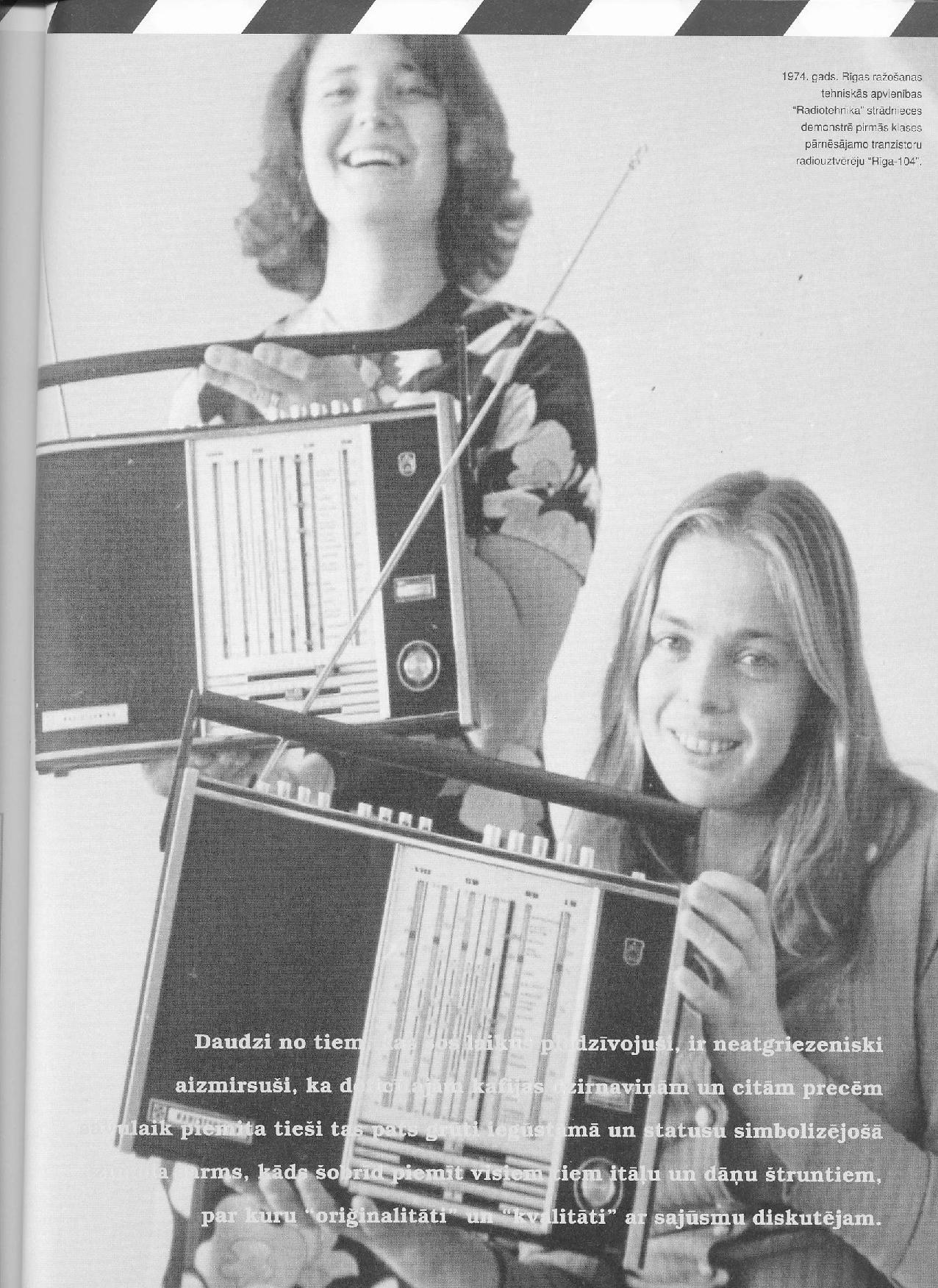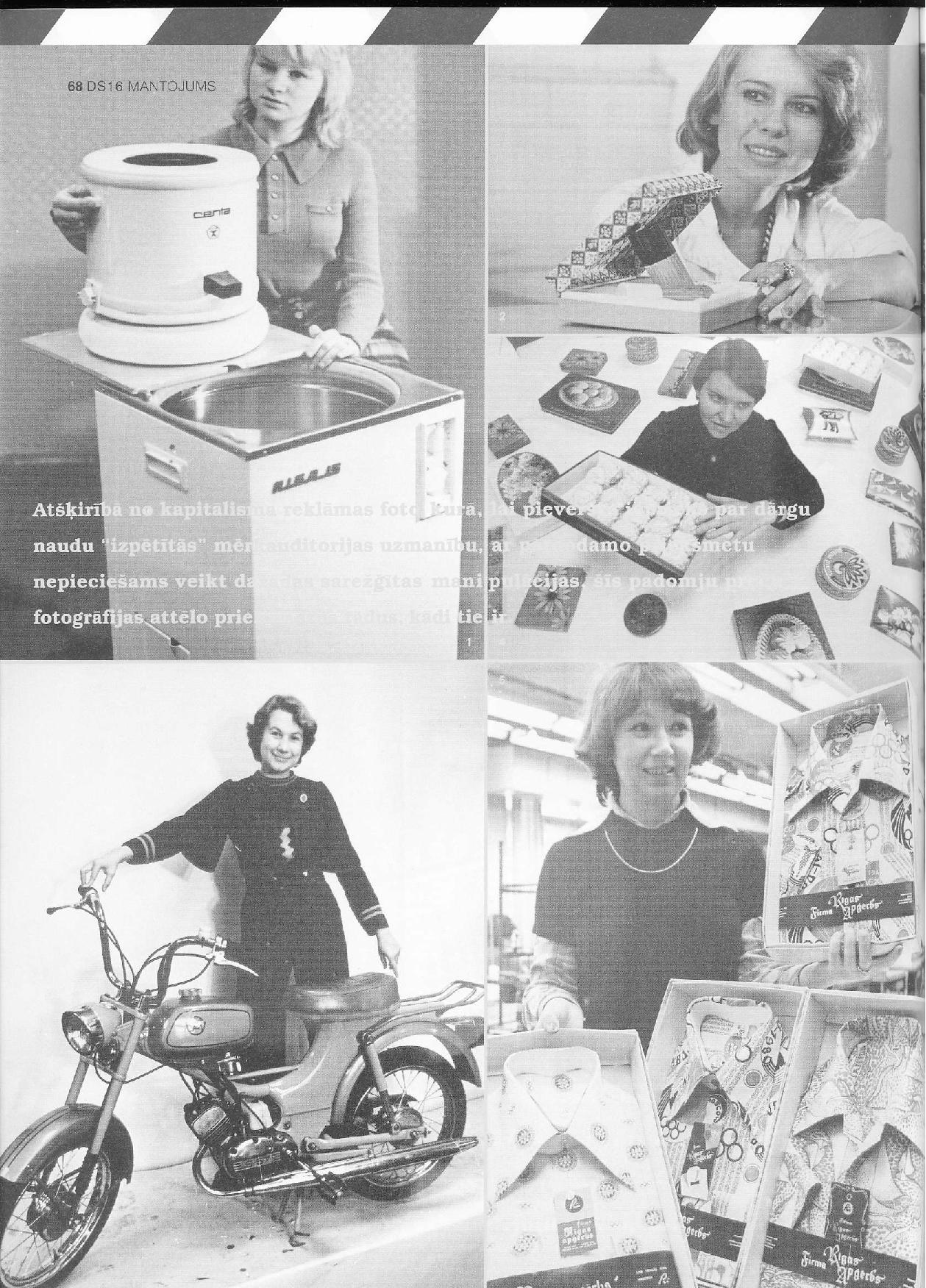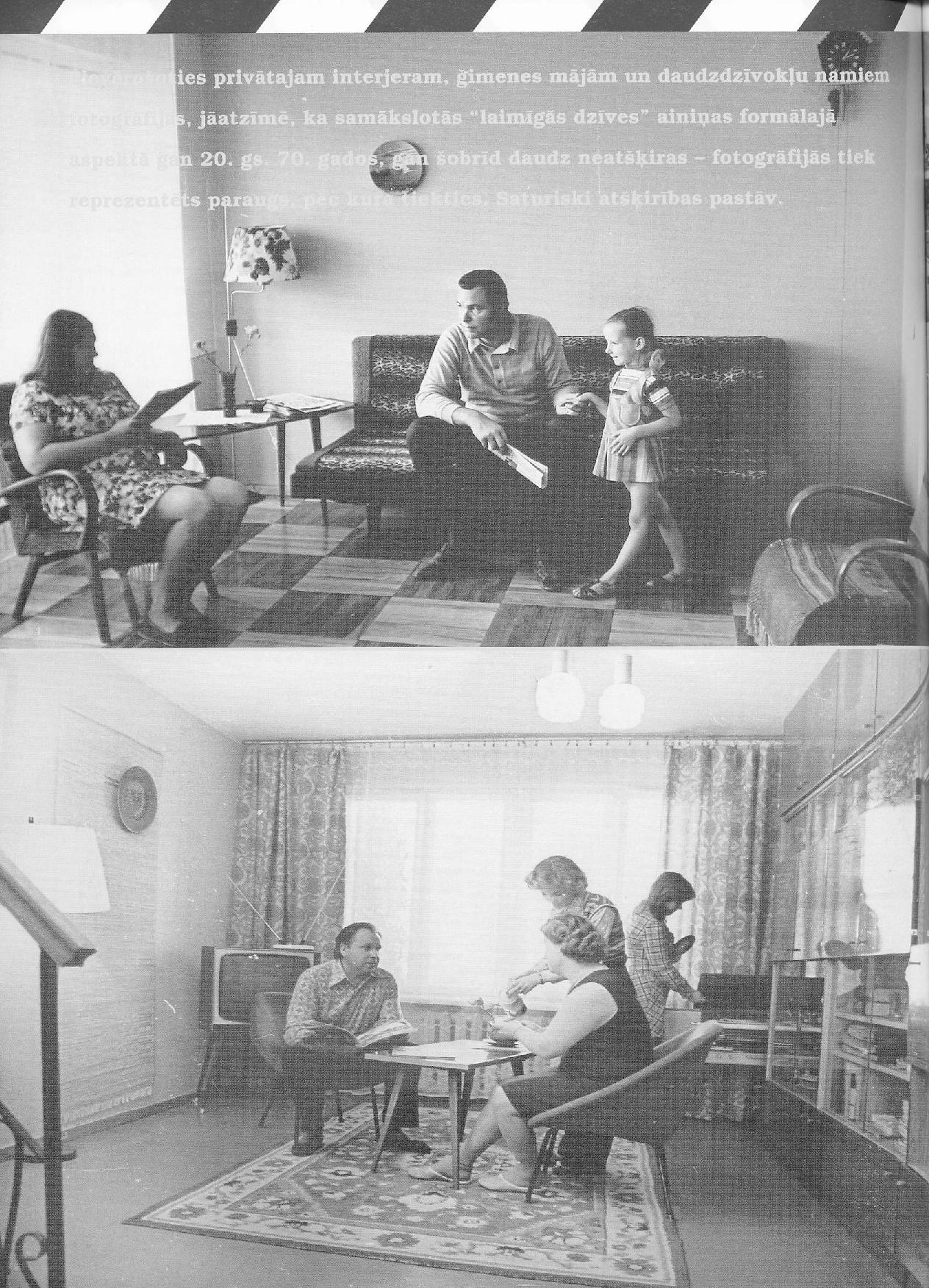“The Language and Value of Things under Communism and Capitalism,” Dizaina Studija 16, No. 6 (2008): 66-74; 86-88.




Photographs published in the postwar Soviet era magazines and newspapers eloquently describe for the next generation the grain and sugar beet harvests in collective farms; the increase in production in significant manufacturing facilities: the huge volume of milk gained from cows and the accomplishment of the five-year plan over a period of three or four years in factories; the triumph of the will of the people over the elements of nature and the continually increasing prosperity of the proletariat. Examining the visual material in chronological order, a gradual change in emphasis can be observed.
There are gradual changes in the choice of scenery and in the formal structure of photographs. The depiction of growth was often politicized in the Stalin era. That later turned into the final tiredness of the period of stagnation which is exemplified by the inexpressive portraits of members of the politbureau and other officials frequently appearing in the press in the 1980s. This tiredness, in turn, soon was shaken up by the unrest of perestroika and glasnost.
Meanwhile, a sort of “golden age” existed among these extremes in the 1970s. That was a time when for many Soviet citizens a certain level of comfort and well-being in everyday life became accessible. When examining photographs that speak of this golden age, it is not possible to overlook the surprising similarities with the ways how Latvia’s current version of capitalism is expressed in press and advertising photographs.